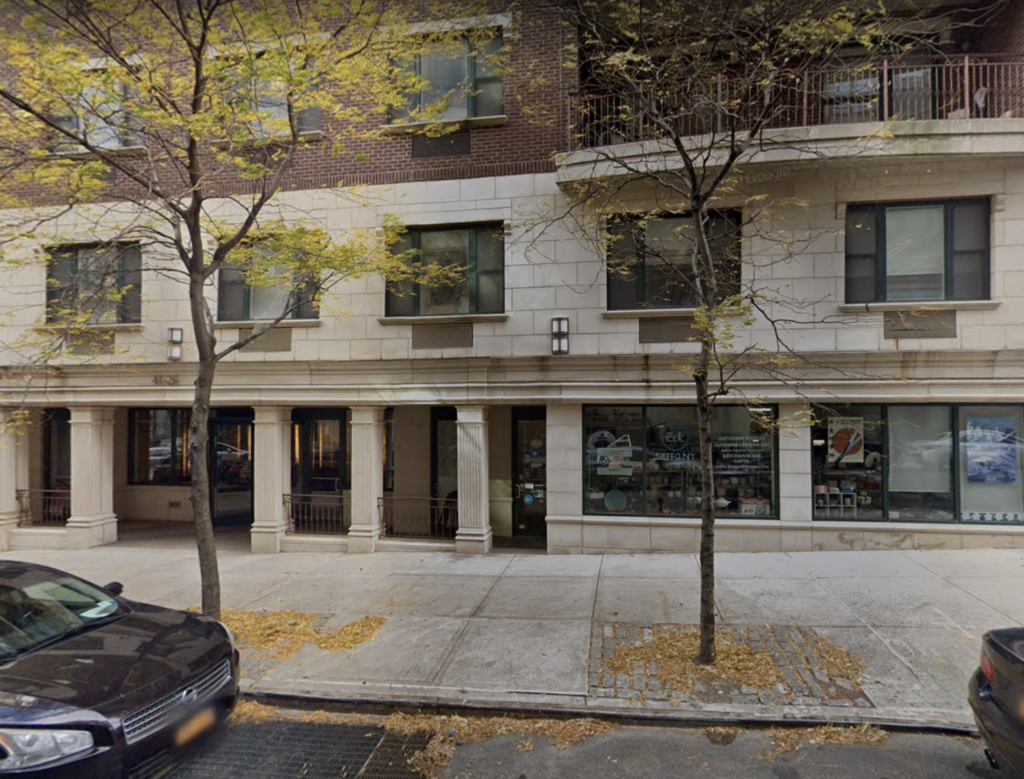Q&A with Grubb Properties’ VP of development Paul O’Shaughnessy

By Atticus O’Brien-Pappalardo
PincusCo connected with Grubb Properties’ vice president of development, Paul O’Shaughnessy, to discuss Grubb’s recent New York City development plans, the possibility of additional development in the city, and what the city’s development market could look like in 2030.
Grubb Properties is a North Carolina-based firm focussed on mid-market housing through investing, development, leasing and property management. The firm recently filed plans for a 317-unit, 240,611-square-foot mixed-use building at 41-34 27th Street in Long Island City, before acquiring the development site at 111 Washington Street in the Financial District for $89.2 million, which the firm is calling 8 Carlisle Street.
This interview is part of a new series of Q&As with industry thought leaders who invest, develop, broker, or provide professional advice related to New York City real estate.
PincusCo recently spoke with Jeffrey Berman, co-founder of the Washington, D.C.-based venture capital firm Camber Creek, as part of the series.
What led Grubb Properties to start buying and developing in New York City? Why now?
I think a lot of it boils down to the fact that we’ve been trying to expand our Link Apartments concept beyond our traditional footprint in the southeast and we had some fundraising successes prior to Covid. The idea, or the goal, was always to expand to the gateway markets, and the available funds combined with the issues that happened with Covid creating uncertainty in the market created a moment for us to get a foothold in New York and also in some other cities like LA. So we have been focussed really hard on developing that and getting as much done as we can while the window is open. The other main factor was the expiration of 421-a in June, which created some uncertainty around certain projects and brought some things to the market that you wouldn’t traditionally see. It became that moment for us to execute the plan that we had.
You have now bought two parcels in NYC, one in LIC, Queens, and one in the Financial District of Manhattan. What made these neighborhoods appealing?
For LIC, its location in a market which has established itself as a solid multifamily location for folks working in Manhattan or working in Queens. They fit right into our demographic of young, urban professionals in their late 20s to early 30s that we are targeting. Also the convenience of transport from that location to get into Manhattan or get elsewhere in New York is really great. That neighborhood has a lot of promise as it continues to develop. As far as the Financial District site, it hasn’t typically been viewed as a big residential location. However, there have been some recent projects that have been more successful. When looking at some of the competition, a lot of it is repurposed office. The ability to design a rental from scratch with that function in mind should give us an advantage, because there just aren’t that many of those buildings in that submarket. There are a couple that have done well so we just want to tag on to that. Obviously the employment and the cultural amenities that are being offered in the Financial District continue to grow. We feel that it is a market that has a lot of promise.
In a press release, Grubb Properties said it was looking at pursuing additional development in New York City. Do you have a target number and maximum number of projects you want to build in the city?
No, I don’t think we have a target. The factor that is probably affecting us the most is the expiration of the 421-a, so we are looking at some projects where that timeline is starting to become tight, it is an opportunity but also a risk. Then what I think we will look for is what do things look like when that program is renewed and what parameters it is renewed under. That is probably the bigger driver than any specifically stated goal or timeframe.
How do you source deals when you are located somewhere else? Do you rely on brokers? Internal data? External data suppliers?
Certainly there are some that come through brokers but a lot of times there are folks who we have been speaking with over a longer period of time, that in some cases become partners in the deals, because they start to know what we like and what works for our product. A lot of those go up as far as Clay Grubb our CEO and we have a couple of those partners on both coasts that are helping us find those opportunities in the market. That has really been the main source. We do work with brokers but it feels like the best deals that get brought to us are ones where someone has been having a conversation around a piece of land over a longer term period and they can clue us in when the decision for a sale is coming. I think we are pretty good to work with because we are very straightforward, we do what we say, we’re not trying to be overly aggressive, so I think once we have done a few deals people find it is good business to work with us which we hope then leads to repeat business.
Your two planned developments in NYC are part of Grubb’s Link Apartments initiative, can you explain what that is to those that might not know?
Link is focussed on providing what we call essential housing, which is market rate housing that is targeted to folks making between 60-80 percent of AMI (Area Median Income) up to 140 percent. The way we do that is largely through efficient design. We try to replicate efficient floor plans that don’t over-build square footage. We look for floor plans that have a good amount of living space but don’t have a lot of wasted space, to bring the overall construction cost down. Then we also look to find other ways, whether it is 421-a, or brownfields in New York, or even partnerships with local partners to try to divide up the economics to be able to develop market rate housing that can get in at the price point of those income ranges that I just mentioned. The reason we feel that this is so important is because you have so many young professionals that are either looking for their first or second place away from home and it has been very difficult with rising construction costs to accommodate that. A lot of what is being developed is in the luxury segment, which is certainly profitable, but the pool is quite shallow. We see that demographic as much more robust, and while it challenges us to try to find the projects that we can market to those folks, we feel that the work is very worthwhile because if you can get it the demand is almost unlimited.
On Grubb’s website it says Grubb does not invest in any property it doesn’t plan to own for at least 10 years. Will that be true in NYC as well?
We always start out with that mindset. That is at this point the way we plan to go with it, not saying that things can’t change or circumstances can’t change, but that is the mentality that we have. It influences our design as well. When we are looking at buildings in New York we’re learning some of the differences between what we have traditionally done in the southeast, which is largely wood frame, five-story products to a high rise concrete product. However, there are similar dynamics, such as whether or not you use a PTAC HVAC unit which is cheaper, and if you’re a merchant builder looking to flip, that is probably the choice you make and you stick the long term owner with the cost and the maintenance of that because your upfront cost is less. We’re making the choice to go for more upgraded systems like heat pump systems because we do take that 10 year timeframe into account. We design that way from the very beginning. We feel that it is necessary to think that way from the beginning because it really designs a better building for someone who is looking to hold it.
If you do still plan on holding these properties until 2031, or later, what’s the biggest change you anticipate in NYC’s development market by then?
I think one of the things that we will see, and LIC is a good example of it, is that there is a greater number of neighborhoods that are becoming acceptable to the target market we are looking at. Once you start to hit that critical mass of amenities, whether it is safety, available living areas, dining options, working options, I think you will start to see a lot of neighborhoods blossoming that in the 1980s or 1990s were considered no-go zones. It’s happened in Brooklyn and many parts of the Bronx and I think that trend just continues because there are some really interesting places in the boroughs with great bones and it just takes that catalyst of getting folks into living around those areas and then you see a virtuous cycle of restaurants, clubs, jobs, and other amenities. I think Brooklyn is really the endgame of all that, where it started in the early 2000s and you see where it is today. That would be the main dynamic I would see, as long as, and I think NYC is doing a pretty good job with this, the rules of development and the barriers to development are definable and allow people to bring those new investments into those areas. It will help housing affordability by simply expanding the number of places people want to live.

